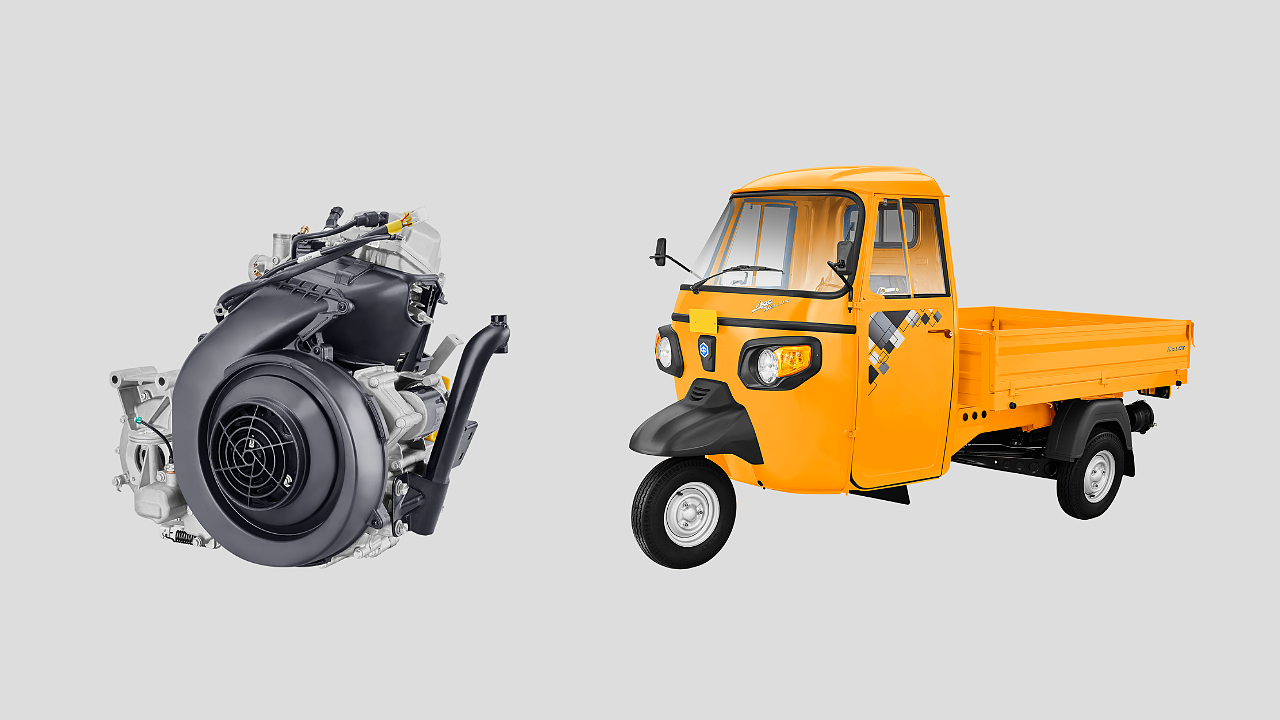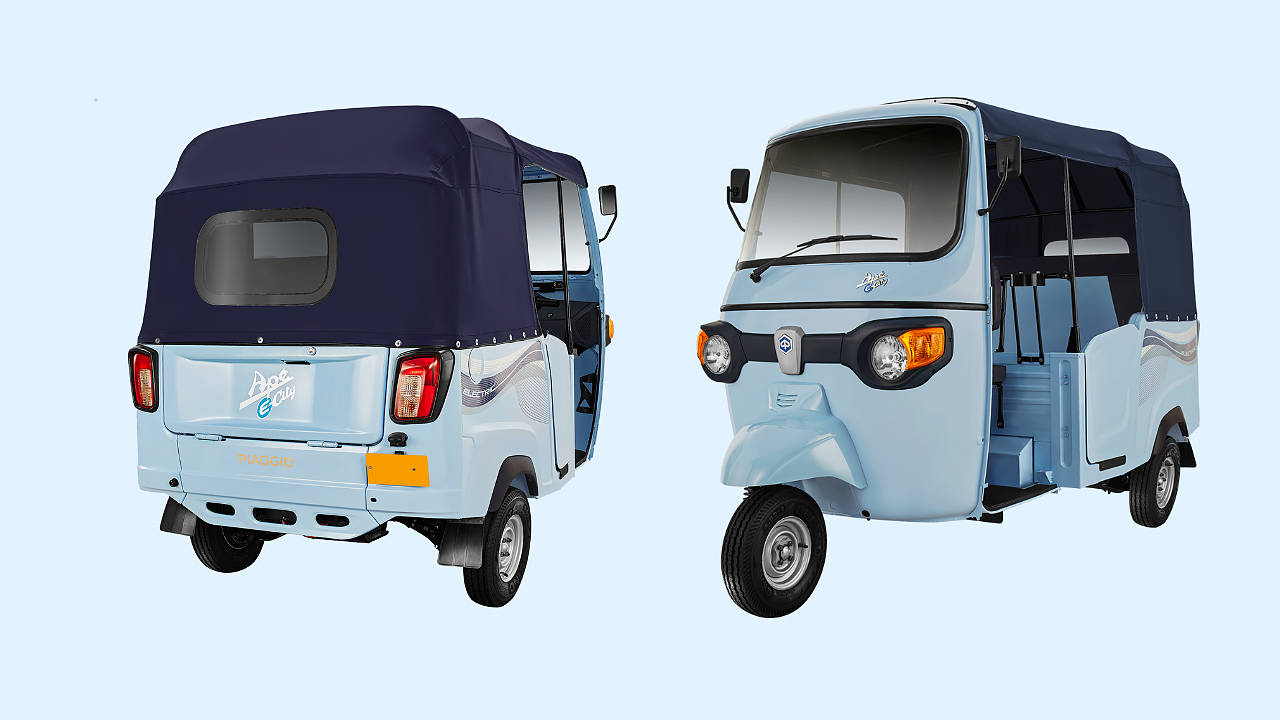
Diego Graffi is currently the Chairman & Managing Director of Piaggio Vehicles (PVPL). He joined Piaggio in 2006 as Head of Vehicles Purchasing with increasing responsibility until he became Head of Group Materials and Components Purchasing. In June 2017, he moved to India to steer the Indian operations of Piaggio. In the past, he has also worked with auto companies like Fiat and Moto Guzzi S.p.A.
PVPL is a niche player in two-wheelers, and this segment is recuperating better. You are a leading player in three-wheelers, but the segment is yet to gain momentum. What do you have to say about this?
We do face many challenges. As you will recall, we are a niche player, not a mass player. Our core business is 3Ws, and our presence here has been monumental for decades. Unfortunately, it hasn’t yet shown the demand recovery. We were hopeful that by H2 CY21, we could return to the normal demand levels – about 70-80% of CY19, but the second wave made us restart from ground zero again.
How do you plan to enhance your market share in 2Ws?
We do not measure ourselves in terms of market share as we are not playing in the overall scooter mass market segment. We are in the premium segment that is 125 cc upwards. This segment has seen, since our inception in India in 2012, an increasing population of vehicles coming from other players. We created this segment in India nearly a decade ago, when we entered the scooters space here.
In the 125 cc segment, we are in the range of 5-7% market share. So, we are quite satisfied with the growth that we have taken in the last two or three years.
The plan is to saturate the production capacity of our Baramati plant of 150,000 vehicles per year. We are close to a lakh now, and within the next couple of years, we will reach this target. We already launched Aprilia SXR 125 in end-2020, and are planning to have a completely brand new Aprilia this year.

What is your take on e-two wheelers? Do you see Piaggio One coming to India?
India is quite a fertile place for all global and local players who want to be in e-mobility. We took a call to make our presence in this space, and have launched the Gamma e3W. But 2Ws are a different story, because looking at the trend of the market in India over the last two to three years, I have not seen the increase in demand that everybody was forecasting, notwithstanding a big push coming from central and local governments.
Indeed, we are looking at the segment. We have just launched Piaggio One, an e-scooter for the Chinese and European markets. Our mission is to look at this kind of proposition also for India. We are evaluating various hypotheses but have not yet finalised a concept or a product proposal. We will see the market trend for the next two-three years, and based on that, we’ll take a call. For sure we are going to enter but not in a short time.
Considering the current 3W scenario in India, when do you see the light at the end of the tunnel?
According to me, there are three main factors. Firstly, the fear of the third wave, mainly for passenger vehicles linked to shared mobility.
The other factor is finance, as over 95% of customers seek loans. Recently, we have seen NBFCs focused more on EMI collection rather than disbursement of new loans. Also, due to restrictions in movement of people, we need to go and collect the papers and documents from customers.
The third factor is that restrictions have not been lifted completely, and that is impacting the growth of shared mobility. There would be a restriction in terms of demand.
Once these three factors are over, hopefully by Q4 this calendar or Q1 CY22, and there’s no new lockdown, I expect that demand will come back to normal. It will still take some more months.
Though you lost volumes by about 59% in FY21 over last year, the market share improved from 23.9% to 29%. Could you help us understand this?
Last year’s lockdown hasn’t impacted the cargo segment among 3Ws as it is linked to last-mile delivery. Traditionally we are leaders in this sector. Secondly, we consciously took the call to be ready for the BS-VI transition before some other players, which gave us a substantial competitive advantage.
Moreover, all the investment that we made on renewing the product portfolio over the last three years has helped us have a competitive product edge to gain market share.
What’s the feedback for BS-VI vehicles?
Overall, I would say positive. We managed to increase the vehicles’ on-road performance by maintaining the same mileage level as in BS-IV. The customers across India have appreciated it.
I do see some basic fear in customers about electronic fuel injection in BS-VI, as they have not experienced it earlier. We have offered training to our service network for them to get used to this technology. A little bit of preparation may be required from the customers, when they go for their service.
There’s always a drop in fuel economy, when emission norms are upgraded, influencing TCO negatively. How did you manage?
When going for new fuel emission norms, these two needs are usually contradictory. We managed by investing not only in fuel injection technology but also in increasing the engine’s displacement. The displacement of BS-IV was 455 cc, and we expanded it to 599 cc in BS-VI. These two actions have allowed us to improve the vehicle’s overall performance and increase the payload and gradability.
Through the flexibility given by the ECUs, the customers could get the best trade-off possible between performance and mileage. We managed to maintain the overall mileage of BS-IV engines even after increasing the performance in BS-VI. These are official data declared for all our BS-VI range. Consumers who have opted for this solution confirm that TCO is at par with BS-IV, with performance in payload and gradability much better.

Can you update us on your e3W business?
In e3Ws, we have decided to go in not only for a product proposition but also a business model proposition. I see a lot of potential and competitive advantage in this space for the B2B sector, mainly for cargo vehicles. We have seen many retail and e-commerce companies interested in transforming their fleet for last-mile delivery from ICE to electric.
We have also seen interest in both kinds of battery solutions – swapping and fixed battery. So we decided to consciously opt for both types of solutions, giving the customer the flexibility to choose the solution most suitable for him.
When entering this space, we created a dedicated network. We have more than 100 outlets pan India under the brand Ape Electric, which is more of an experience centre than a regular outlet. We are also investing in charging infrastructure in partnership with SUN Mobility.
After our Gamma range was launched in April, we planned for our Ape City small passenger vehicle in swappable and fixed battery options. We introduced a cargo vehicle with a fixed battery in March, and now we are planning to launch with the swappable model, also in two different options.
How have you fared in exports?
Exports are doing quite well. We have consolidated our presence in the African market with Nigeria and Sudan giving us good sales. We are the market leader in the passenger space in Sudan, while in Nigeria we are growing very fast.
The best year for us was 2019, as we exported more than 35,000 vehicles. Unfortunately, the year 2020 was heavily impacted by the lockdown. Our current plan is to replicate the performance of 2019, by crossing 35,000 units of exports. In the next two or three years, we hope to export 60,000 vehicles, as we are also investing in new market opportunities.
We want to expand our presence in Middle-east Asia and Southeast Asia as we see good potential for the conventional auto-rickshaw that is typical of India. We are also looking at Vietnam, Indonesia, the Philippines and others. We want to invest much effort to increase our presence and gain leadership wherever possible. The market data from competitors show a huge potential globally. So we want to grow and expand our presence far more in the next two or three years.
We are exporting some 2Ws from India to South America as well. However, we are mainly focusing on the surrounding countries like Nepal, Sri Lanka and Bangladesh.